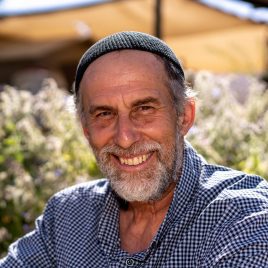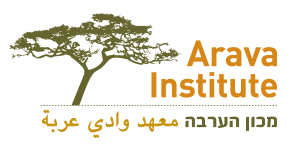
First of all, thank-you to Cathie [Granit, Academic Program Director] and the Institute for honoring me, by asking me to give the Opening Address at this Graduation Ceremony for the Fall 2023 semester. To the students, thank-you for the many opportunities you extended to me to hike together, to discuss and learn about the many layers of the conflict & conflict resolution theories, explore religion, and study the weekly Torah reading. I always learn from you, and you feed my soul. Shukran, Todah, Thank-you.
Charles Dickens begins his novel A Tale of Two Cities about the tumultuous times of the French Revolution with this famous opening, “It was the best of times, it was the worst of times.” Those same words can also frame the experience of this semester at the Arava Institute, what you achieved, what you created here, was the best of times; while around us, the worst of times.
The underpinning of encountering the best and the worst simultaneously can be unsettling as there appears nothing solid, nothing consistent we can latch onto. In that uncertainty perhaps also lies the answer.
Our campus and Institute are situated in this beautiful Arava valley, a section of the Syrian-African Rift stretching 7,000 kilometers/4,300 miles from Syria to Mozambique. Formed some 20 million years ago, the Arava Valley is the result of two massive tectonic plates – the African plate to our west, and the Arabian plate to our east, rifting apart as well as moving at different rates northward. That is to say, there is no firm ground, no terra firma, to stand on. And yet here we are feeling unmoved as the ground beneath moves and groans. That is the nature of nature, the environment, our world, our lives…the imperfection of perfection, the consistency of inconsistency, the inconsistency of consistency.
We often live our lives with the illusion of the constant, but change is the real constant. We learned on our hike last Friday as we examined the layers of limestone and the ammonite fossils laying on ancient sea beds, along with the varied colors of gypsum – our favorite color, salmon sushi; we learned that where we stand and sit at this moment when the continental land masses looked very different 200 million years ago, that we would have found ourselves living south of the equator.
To that understanding of change we turn to the northern star. In Shakespeare’s Julius Caesar (Act 3, scene 1), Julius Caesar says:
I could be well moved, if I were as you;
If I could pray to move, prayers would move me.
But I am constant as the northern star,
Of whose true-fixed and resting quality
There is no fellow in the firmament.
More recently Joni Mitchel sings, “I am as constant as a northern star.” Both she and Shakespeare use the northern star as a metaphor for that which is unmoved and can therefore be relied upon. However, they are both wrong. Because of the earth’s wobble as it spins, 14 stars take turns being the northern star during an ever repeating 26,000 year cycle. While Polaris is now the Northern star, some 3,000 years ago around the time of Kings David and Solomon in ancient Israel the star Kochab was the northern star. In a thousand years from now, Errai will be the northern star.
All of this is to say, we trick ourselves into believing that our world is constructed, if you will, on firm plates. In times of war we are reminded of that false illusion. So what do we do with that literally and figuratively unsettling reality? You ask a rabbi for an answer.
In the annual weekly reading of the Torah we find ourselves having finished the Book of Genesis/Sefer Beresheet and starting the Book of Exodus/Sefer Sh’mot. A Torah scroll is filled with line after line of words. However, between the books of the Torah we find five empty spaces. The question is how do we get from here to there with nothing to hold onto, nothing to latch onto – the letters and words, a constant of the Torah, are missing. How do we cross over this uncharted territory and space?
When we finish one book of the Torah we collectively say, “Chazak, chazak, v’nitchazeik,” meaning, “Be strong, be strong and let us strengthen each other.” That is to say, we must be strong in the face of uncertainty, and we gain strength from all the lessons learned from the book, the experiences, we are about to leave behind, and finally we gain strength from each other from what we have accomplished together.
This graduation ceremony marks the crossing over from the known to the unknown; across that empty space of the scroll. How does one leave, as many of you have described your relationship with each other – your other family, the family you wanted to be with these difficult days?
Being strong in the face of the new, by drawing from your lessons learned this past semester in and outside the classroom and internships, but most important, v’nitchazek, continue to strengthen each other after you leave the front gate of Kibbutz Ketura. Sunday night, on the eve of the New Year, as you all huddled together intertwined around the fire, you resembled a beehive – warm, strong, and full of energy.
[One of the students,] Jawdat described the time here as, “a big container for confusion and curiosity; that also makes me hopeful.” Take that special container with you, as the world and our lives pen the pages of a complex and, at times, complicated novel. As we have discussed, real peace is messy, including the very different narratives and different orientations of our internal dialogues we all carry within ourselves. Our work is not to see them in conflict, or to make them go away, but to allow them to be heard like notes in a musical score: A polyphony with two or more sounds happening simultaneously; or a polyphonic texture, when two or more independent melodic lines are heard at the same time; or a polyrhythm, when several independent rhythmic lines play at the same time.
Compose that song, compose your song. By continuing and nurturing this family you have created here; but in a new form and a new setting, a new musical key, you, and we, the Institute and alumni, can together work to change the cacophony, the noise, the tumult that surrounds us these days and transpose it to a more beautiful, energetic, and influential song. Play it louder and louder – and as we have also discussed, widen the circle. By doing all that, “the best of times” remains within our grasp.
Mabruk, Mazel Tov, Congratulations.

